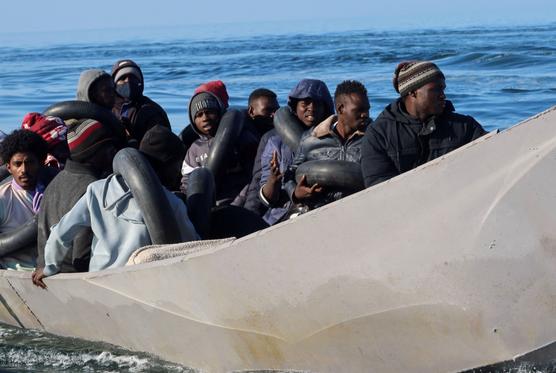Frontex, the European Union’s border and coast guard agency, has denied accusations that it abandoned a migrant boat in distress near Tunisia. The boat, which was carrying over 90 people, capsized last Monday (July 28), leading to the tragic deaths of two children.
Migrant rescue organization Sea-Watch said the boat was left alone for hours despite warning EU and Italian authorities. They claim Frontex arrived late, saw the sinking boat, and left without offering full help, accusing the agency of failing to prevent the deaths.
Frontex strongly rejected the claims, saying its aircraft were involved in the rescue operation before, during, and after the boat capsized. The agency said it provided aerial coordination and worked with the crew of a merchant ship named Port Fukoka, which rescued most of the migrants.
Why didn’t Frontex use its rescue ship instead of planes?
Sea-Watch questioned this too. They argued that Frontex could have launched a high-speed rescue vessel from Lampedusa instead of just using aircraft. The group claimed this would have saved lives faster. Frontex, however, said its planes dropped a life raft to help people in the water and directed the merchant ship to the scene.
Frontex explained that three aircraft were monitoring the situation, and one of them, Eagle 2, was close when the boat capsized. They claim this real-time air support helped save lives. The agency insisted it played a key role in preventing further loss of life.
Sea-Watch posted updates on social media, criticizing Frontex and calling the response slow. They said the boat was left for nearly a day after it was first reported. According to the group, a pregnant woman on the ship had to wait two days to be evacuated after her water broke.
Eventually, most of the rescued migrants were brought to Italy by Saturday (August 1). The pregnant woman and her husband were taken off the ship earlier due to her medical condition.
Sea-Watch called the delays in rescue and disembarkation “not just negligence, but policy.” They continue to push for better, faster responses to sea emergencies involving migrants.
This case has renewed criticism of how EU agencies handle rescue missions at sea, especially in the Mediterranean where thousands of migrants attempt dangerous crossings every year.

